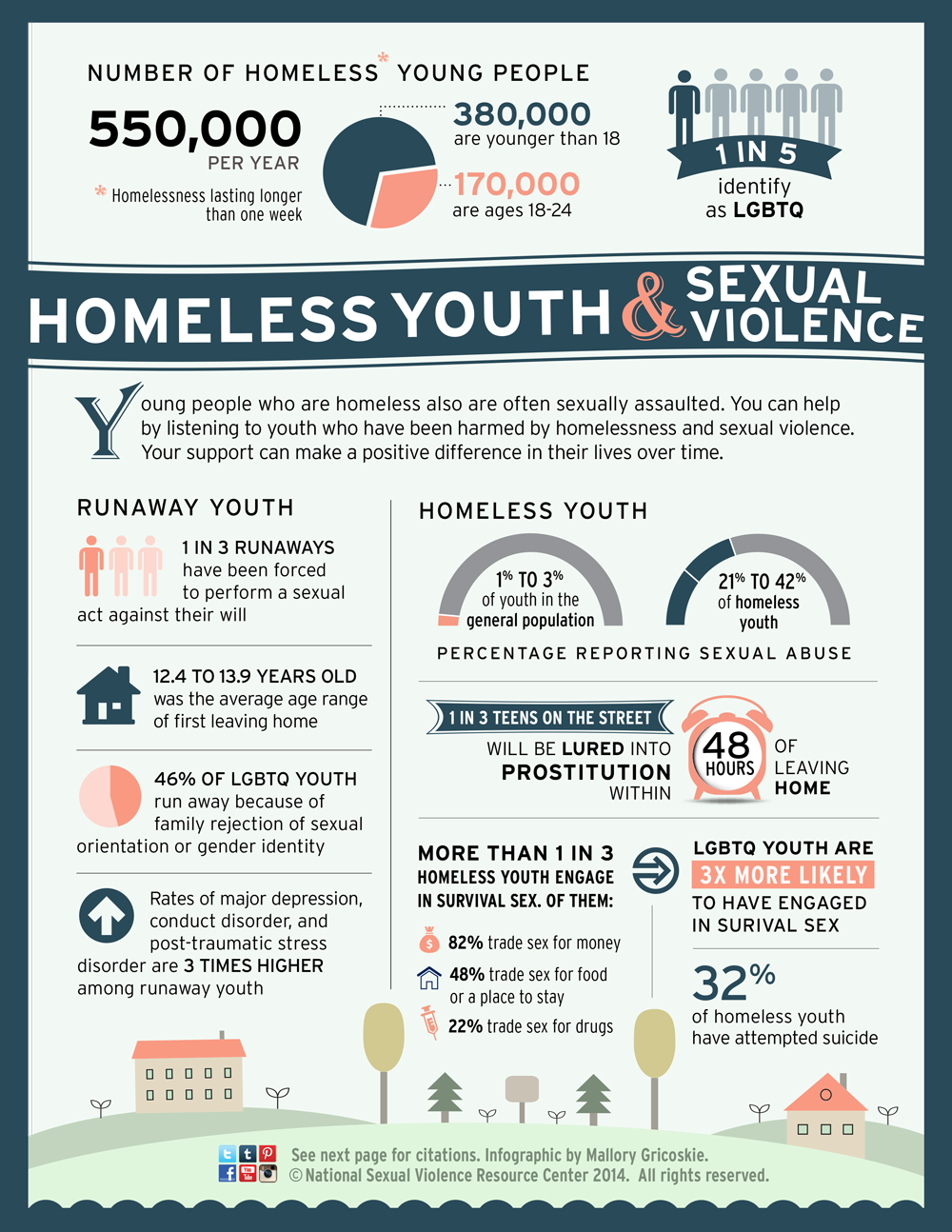Young people who are homeless have few of the securities that those with shelter take for granted. Youth who are homeless face an increased risk of being victims of violence, especially sexual violence. The relationship between sexual violence and homelessness is complicated: sexual violence is both a contributor to homelessness and a factor resulting from homelessness. The below infographic, published by the National Sexual Violence Resource Center in the United States, looks into the link that exists between youth homelessness and sexual violence.

One way of understanding the scope of the problem at hand is by comparing the rates of sexual violence among youth in the general population to the rates of sexual violence among youth living in homelessness. The infographic states that 21-41% of homeless youth in the US report sexual abuse compared to just 1%-3% of youth in the general population. This is a startlingly high discrepancy. Clearly, living on the streets dramatically increases the risk of being a victim of sexual violence.
Among homeless youth, certain groups are at increased risk of being victims of sexual violence. Findings from a 2009 survey among homeless youth in Toronto found that among female youth, black females were more likely to be victims of sexual assaults (47%) than white females (33%). The same survey found that 33.4% of homeless LGBTTQ youth (who represented a quarter of youth surveyed) had been victims of sexual assaults, compared to 13.5% of homeless heterosexual youth. Despite this knowledge, there are zero specialized housing initiatives for LGBTQ2 youth in Canada. We need to ensure that services and supports available to youth adequately addressed heightened risks and dangers that exist among the lines of gender, race and sexual identity.
When interpreting the above figures, it’s important to keep in mind that many assaults go unreported. This means the incidence rate of violent crime against homeless youth is likely far higher than these numbers suggest. The presence of stigma, as well as victim-blaming stereotypes, play a large role in keeping youth from speaking up about the problems they are facing. Research shows that widespread acceptance of victim-blaming stereotypes can lead to the internalization of these beliefs. This means that a youth who is a regular victim of sexual violence may come to believe that he or she is somehow responsible for crimes that have been committed against them. If we want victims of sexual violence to feel secure about reporting assaults, it’s essential that the stigma associated with being homeless and being a victim of sexual violence are removed. The removal of stigma needs to be coupled with robust responses by law enforcement authorities that demonstrate our commitment to the wellbeing of youth living in homelessness.
The incidence of sexual violence among youth has strong implications for the healthy physical, psychological, and emotional development of youth. Municipalities and provincial governments need to work directly with service providers to ensure measures are in place to protect homeless youth. We have a responsibility to these youth to bridge the existing gaps in supports and service provision.

